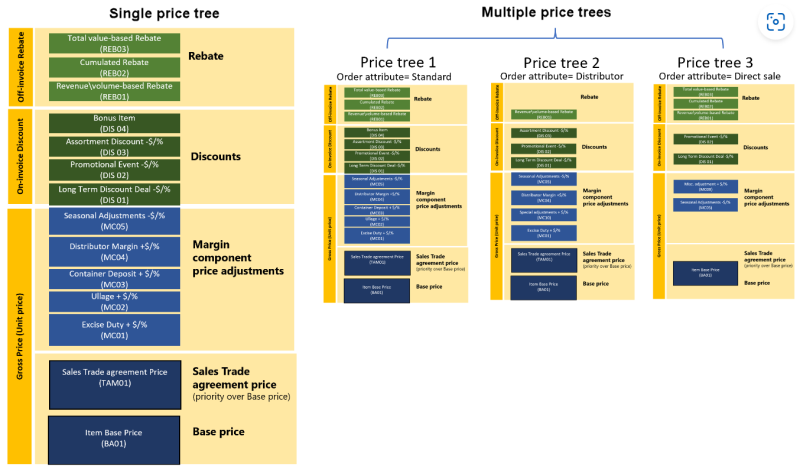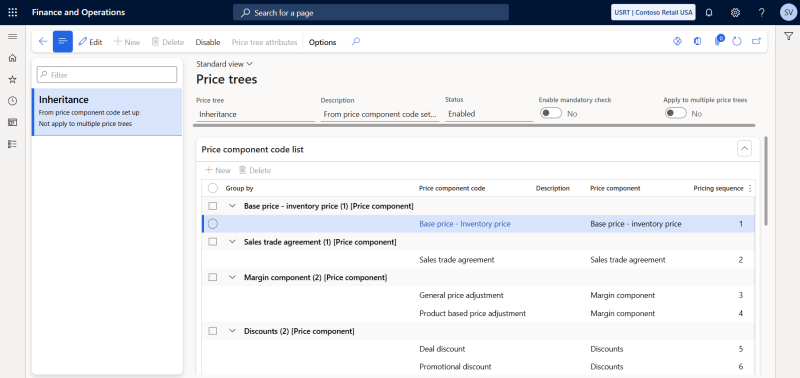Price Structure
Important: If you are considering migrating your ERP to Unified pricing management, please contact your Sana representative before making any changes. We want to ensure a smooth transition by working with you on an individualized plan tailored to your business needs.
In Unified pricing management, price structures, or price trees, play a crucial role in ensuring accurate and flexible pricing strategies. Price structures provide clarity on the sequence of pricing components such as base price, margin, discounts, charges, and rebates. They also offer insight into the pricing flow and the impact of various price points. Essentially, price trees are visual representations that illustrate different pricing paths based on customer segments or product lines.
It’s possible to use a single price structure across a company, or opt for separate structures for each order attribute within the company. The pricing logic embedded within these structures ensures that the base price is accurately determined.
The value of price structures in Unified pricing management lies in their ability to:
-
Enhance pricing accuracy: Price trees ensure that pricing components are applied in the correct sequence, helping businesses determine the most accurate final price for each transaction.
-
Streamline price management: By organizing pricing elements into a visual representation, price structures make it easier to manage and adjust prices based on different customer segments, products, or order attributes, leading to greater flexibility.
-
Support dynamic pricing strategies: Price trees enable companies to quickly adapt pricing strategies for various customer profiles or market conditions. They allow the creation of multiple pricing paths that can be tailored to specific business needs.
-
Ensure consistency: With embedded pricing logic, price structures guarantee consistency in pricing calculations across all sales channels and regions, minimizing the risk of errors and discrepancies.
Image Source: Microsoft
The following are the primary components that can be included in a price structure:
- Base price
- Sales trade agreement price
- Margin component price adjustments
- Discounts
- Rebate management
To manage the price structure, in Dynamics 365 for Finance and Operations click: Pricing management > Setup > Price component codes > Price trees.
You can configure a company to use a single price structure or set up multiple price structures in a company.
The purpose of a price structure is to establish the order in which the system applies each price adjustment and to define additional settings for each price component code, such as concurrency and compounding rules.
If a company is configured to use a single price structure, there is a one-to-one relationship between the company and the price structure. In this case, the pricing engine matches each sales order with the corresponding price component codes, following the pricing sequence defined in the single price structure.
If multiple price structures are set up for a company, a one-to-many relationship exists between the company and its price structures. The pricing engine will select the appropriate price structure based on the specified Price tree attribute, which is one of the order attributes. Once the applicable price structure is determined, the pricing engine will match the sales order with the corresponding price component codes, following the defined pricing sequence in the chosen price tree.
For more information about how to configure price structures and to arrange price component codes into a price structure, refer to the official Microsoft documentation:
Price Structure Overview
Set Up a Company to Use a Single Price Structure
Set Up a Company to Use Multiple Price Structures
Arrange Price Component Codes Into a Price Structure

